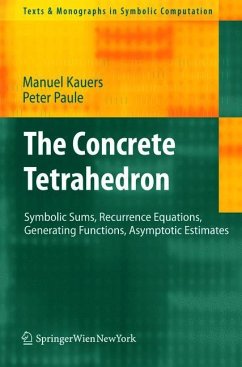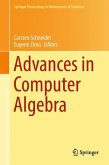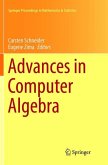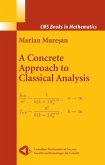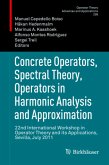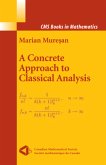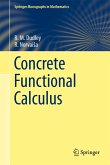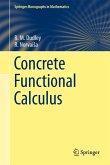The book treats four mathematical concepts which play a fundamental role in many different areas of mathematics: symbolic sums, recurrence (difference) equations, generating functions, and asymptotic estimates.
Their key features, in isolation or in combination, their mastery by paper and pencil or by computer programs, and their applications to problems in pure mathematics or to "real world problems" (e.g. the analysis of algorithms) are studied. The book is intended as an algorithmic supplement to the bestselling "Concrete Mathematics" by Graham, Knuth and Patashnik.
Their key features, in isolation or in combination, their mastery by paper and pencil or by computer programs, and their applications to problems in pure mathematics or to "real world problems" (e.g. the analysis of algorithms) are studied. The book is intended as an algorithmic supplement to the bestselling "Concrete Mathematics" by Graham, Knuth and Patashnik.
From the reviews:
"The Concrete Tetrahedron is suitable for advanced undergraduate students in mathematics or computer science who have had some exposure to elementary concepts in abstract algebra and complex analysis. ... The volume's numerous problems together with selected solutions definitely make it appropriate for an independent reading course for the motivated student. Summing Up: Highly recommended. Upper-division undergraduates." (D. M. Ha, Choice, Vol. 49 (11), July, 2012)
"The book deals with a blend of continuous and discrete mathematics, applying continuous methods to discrete problems. ... Those who are interested in the subject matter of Concrete Mathematics will enjoy The Concrete Tetrahedron for an independent perspective, some more recent results, and for new applications." (John D. Cook, The Mathematical Association of America, March, 2011)
"The Concrete Tetrahedron is suitable for advanced undergraduate students in mathematics or computer science who have had some exposure to elementary concepts in abstract algebra and complex analysis. ... The volume's numerous problems together with selected solutions definitely make it appropriate for an independent reading course for the motivated student. Summing Up: Highly recommended. Upper-division undergraduates." (D. M. Ha, Choice, Vol. 49 (11), July, 2012)
"The book deals with a blend of continuous and discrete mathematics, applying continuous methods to discrete problems. ... Those who are interested in the subject matter of Concrete Mathematics will enjoy The Concrete Tetrahedron for an independent perspective, some more recent results, and for new applications." (John D. Cook, The Mathematical Association of America, March, 2011)

